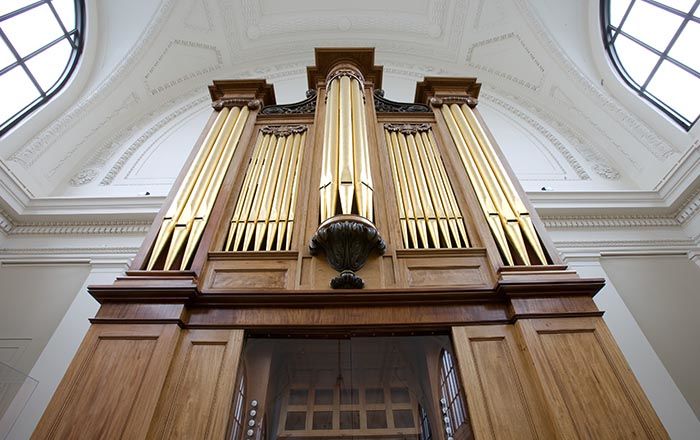Clarinet in F
August T. A. Knochenhauer German
Not on view
August T. Knochenhauer (born Potsdam 15 April 1796) trained at Griesling & Schlott in Berlin and also worked in Dresden. He was foreman for the Weisse firm in Berlin in 1819. In 1826, Knochenhauer established his own firm in Berlin and was appointed Court maker in 1841. In the same year he got an appointment as Hofinstrumentenmacher ‘on account of his excellent flutes, clarinets’. The Prussian eagle in his stamp suggests that these instruments were made after this date. G.A.R. might be the Garde du Corps of the King of Prussia and 1856 the year when the instrument was purchased for the army.
Overall size: 844
Sounding length: ca. 870
Bore: c-hole ca. 16.0
Technical description: Boxwood with ivory ferrules and brass keywork. Five pieces: mouthpiece, barrel, upper section, lower section, bell. Unstamped blackwood mouthpiece not grooved for cord. Curved barrel to shorten the distance between player and instrument. Rudiments of square and round rings. Straight speaker, speaker liner projects about 4 mm into bore. Integral wooden thumb rest. F♯3/C♯5 guided thoroughly. Bell with a wooden rim. All flaps bevelled.
L0: T; speaker.
L1: T; throat A♮; throat A♭.
L2: T;
F4/ C6.
L3: T; E♭4/B♭5.
L4: C♯4/G♯5; E3/B♮4; F♯3/C♯5.
R1: T; side trill key for throat A-B♮ and B♭-C.
R2: T.
R3: T; B♭3/F♮5; side B♮3/F♯5.
R4: F3/C5; G♯3/E♭5.
Keyhead type: flat square.
Keymount type: rudiments of turned wooden rings, blocks.
Inscribed on barrel, upper section, lower section, and bell with Prussian Eagle / KNOCHENHAUER / BERLIN"; on barrel and lower section also "G.A.R. / 1856" / flower.
This image cannot be enlarged, viewed at full screen, or downloaded.
This artwork is meant to be viewed from right to left. Scroll left to view more.
.jpg)

.jpg)
.jpg)
